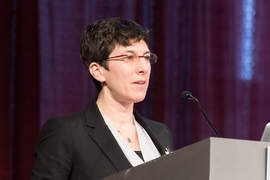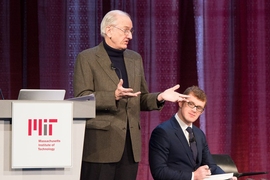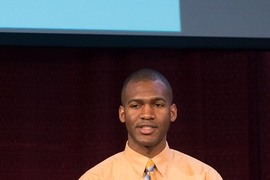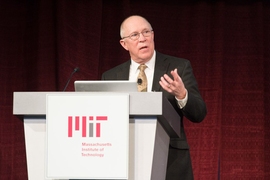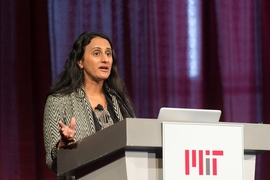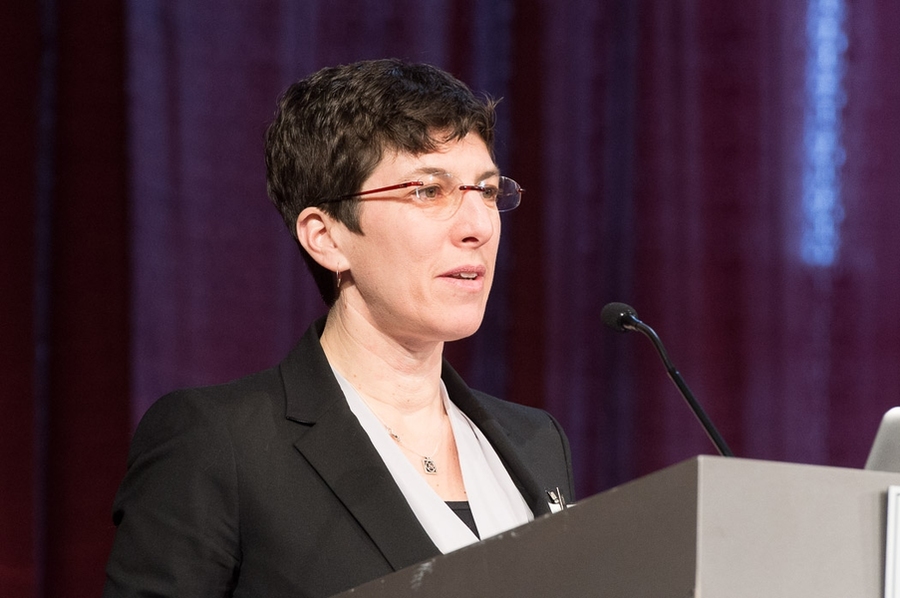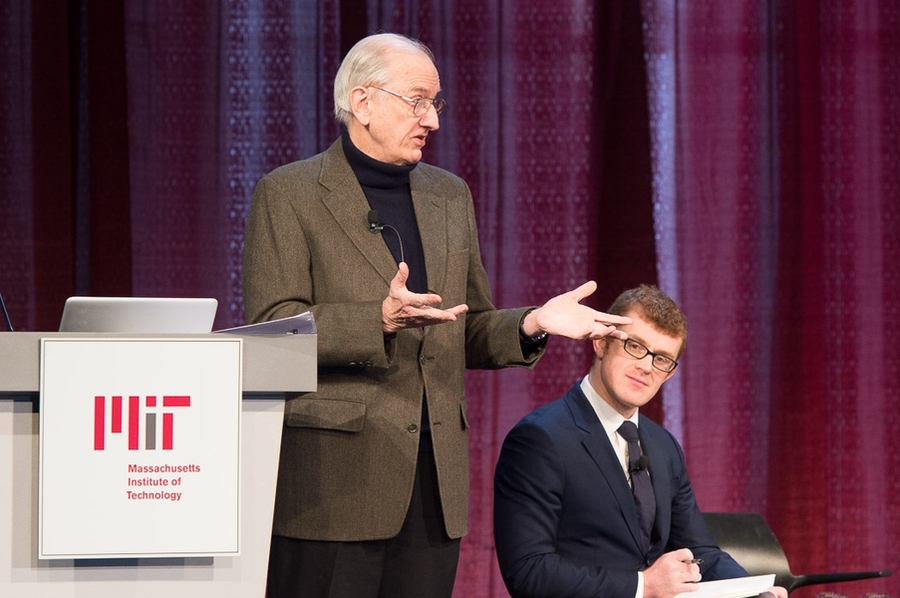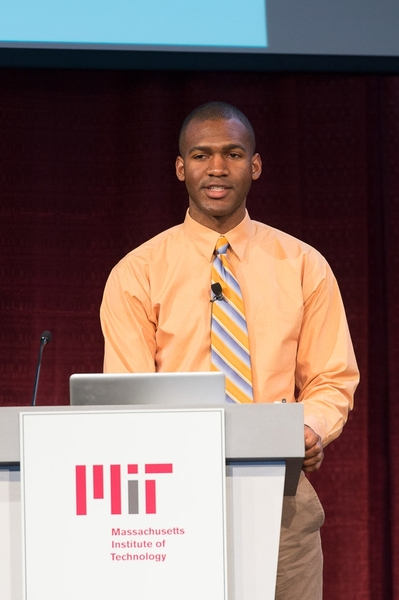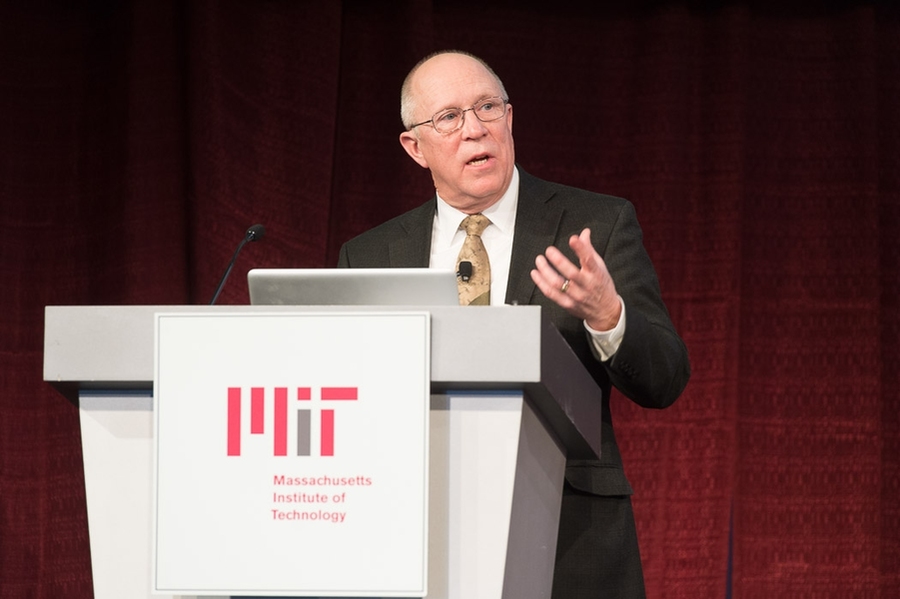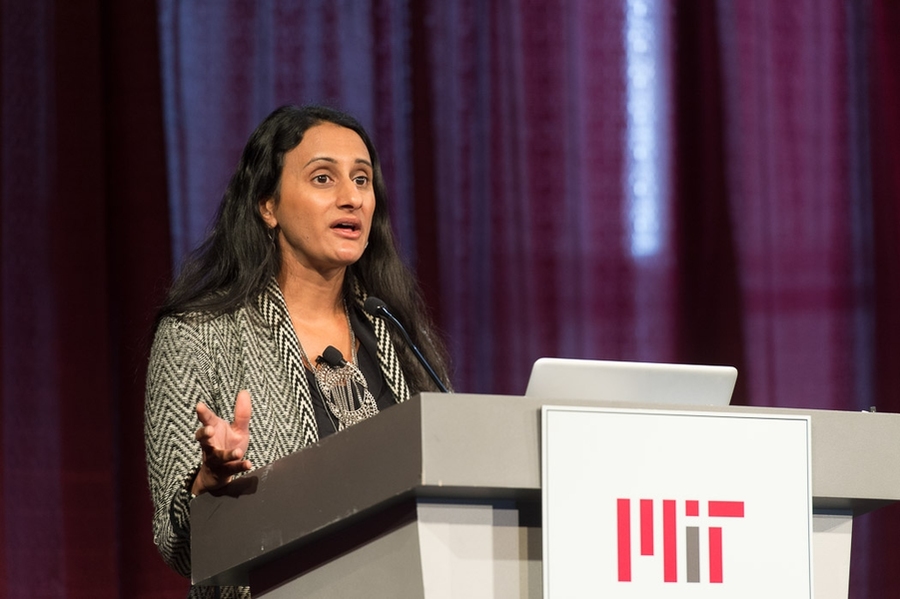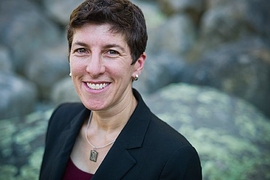It was apparent even before the meeting began that this would be a different kind of event: The cups and plates were compostable, the name badges were plain paper, and there were no programs at all — the conference agenda came via a smartphone app.
Those small differences clearly signaled the purpose of this gathering: getting the MIT community to embrace the principles of efficiency and sustainability. The invitation-only event, called “Sustainability Connect,” took place Monday, bringing together faculty members, students, leaders of MIT’s facilities and sustainability offices, administrators, and others to hear about ongoing plans and to brainstorm about how to move the Institute toward a greener, cleaner, less-wasteful future.
The aim is to make MIT into a living laboratory for exploring, testing, and quantifying ways to make more efficient use of energy, water, buildings, and equipment — and then to disseminate information about the most successful practices to have a global impact.
“Innovation can be created, but it must also be proven,” said Julie Newman, MIT’s director of sustainability and the event’s lead organizer. “We need to create new metrics and new standards of efficiency.”
By harnessing the creative powers of the MIT community to make the campus into a test bed of technologies and practices for a more sustainable society, Newman said, the goal is to ask: “How can MIT be a game-changing force for innovation in the 21st century?”
Israel Ruiz, MIT’s executive vice president and treasurer, who spearheaded creation of the Office of Sustainability, said, “The challenge we’re addressing today is one that I’m personally very committed to.” Ruiz pointed out that the Institute is currently in the midst of “one of the largest construction periods MIT has ever experienced” — offering opportunities to ensure that new buildings and renovations respect, from the earliest design stages, the principles of efficiency and sustainability in their energy, water, waste-handling, and other systems.
Ruiz pointed to MIT.nano, which is being designed as the most energy-efficient cleanroom building of its kind in the country. Because of their need for huge volumes of air transport to maintain a dust-free environment, cleanrooms are exceptionally energy-intensive to operate; MIT.nano incorporates a variety of features designed to make it as efficient as possible without any compromises in its technical performance.
Bringing those considerations of sustainability into the design process at the earliest possible stage is key to getting the best performance, Ruiz said. “When you do this early enough in the design, it doesn’t cost that much,” he said.
In fact, in many cases it may not cost anything at all, said John Sterman, the Jay W. Forrester Professor of Management at the MIT Sloan School of Management. Sterman, who was a strong advocate for energy efficiency in the design of MIT Sloan’s Building E62, said that a detailed analysis of the design and performance of that building shows that adding cutting-edge features for efficiency actually added essentially no cost to the building’s construction: The incremental cost was so small that it amounted to a “rounding error,” Sterman said — a small fraction of a percent.
Jeremy Poindexter, a graduate student in materials science and engineering, presented results from a study carried out by a team of students on the potential for installing solar panels on rooftops on the MIT campus. The total potentially usable roof area, he said, could produce as much as 27 megawatts of power, and MIT’s peak demand tends to be between 25 and 30 megawatts, so this could make a substantial contribution. The team suggested that using just the best, most easily adapted buildings for an initial project could yield 4.3 megawatts, without the need for any major retrofits.
After hearing from several speakers who described specific measures proposed and even tried out on MIT’s campus or elsewhere, the group broke into teams to brainstorm new ideas for how to reduce MIT’s environmental footprint, whether by addressing heating and cooling systems, generation and use of electricity, water supply and wastewater handling, food supplies and waste, or transportation systems.
Many participants were drawn from the membership of four new working groups created by the Office of Sustainability to offer guidance in specific areas; these groups will operate under the guidance of a Campus Sustainability Task Force, which Newman will co-chair. The four groups will focus on building design and construction; storm water and land management; green labs; and materials and waste management.
Ruiz said there will also be a new Campus Sustainability Steering Committee, comprising senior administrators and decision-makers, to “make sure that when we make a decision, sustainability will be a part of it.” Ruiz reiterated that this commitment is not just for a day or a month, but something that needs to become an ongoing and long-term part of how MIT operates.
